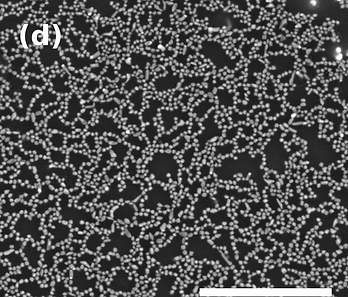
GPan
Group of Polymers and Nanostructures
GPaN

Group of Polymers and Nanostructures
Throughout the last decade, considerable interest has been shown in nanostructured metallic surfaces due to the properties related to the formation of surface plasmons (SP). The Group of Polymers and Nanostructures of Universidade Tecnológica Federal do Paraná - Toledo has been focused on the synthesis of active glasses for nanostructure growth.

RESEARCH

Synthesis of metallic nanofilms for SERS active substrates

Fabrication, morphological characterization, and surface enhanced Raman scattering (SERS) activity of innovative glass-silver and glass-copper substrates obtained by an inexpensive and simple approach.

Self-supported nickel nanoparticles on germanophosphate glasses: synthesis and applications in catalysis
The development of supported catalysts based on simple procedures without waste products and time-consuming steps is highly desirable. In this paper, self-supported nickel-based nanoparticles were obtained at the surface of the germanophosphate glasses by bottom-up process and evaluated as
potential catalysts for the benzyl alcohol oxidation and bis(indolyl)methanes synthesis.

Synthesis of silver nanoparticles from bottom up approach on borophosphate glass and their applications as SERS, antibacterial and glass-based catalyst
Low cost synthesis and characterization of silver nanoparticles (AgNPs) on borophosphate glass by a two-step process involving a melting quenching technique and a post-annealing method.
DOI: 10.1016/j.apsusc.2018.12.155
Applied Surface Science
Volume 473, 15 April 2019, Pages 303-312


Borophosphate glasses: Synthesis, characterization and application as catalyst for bis(indolyl)methanes synthesis under greener conditions
We demonstrate that glass can be applied as an active material in catalysis. The glass was successfully applied as catalysts in bioactive bis(indolyl)methanes (BIMs) molecules with the capability to extend the reaction substrate to other N-heterocycle.
DOI: 10.1016/j.jnoncrysol.2018.06.020
Journal of Non-Crystalline Solids Volume 498, 15 October 2018, Pages 153–159


Lead–germanate glasses: an easy growth process for silver nanoparticles and their promising applications in photonics and catalysis
Non-conventional silver nanoparticle growth on the surface of lead–germanate oxide glasses: catalytic performance and luminescence enhancement.
RSC Adv., 2017,7, 41479-41485
The glass annealing, under a controlled atmosphere, enables the growth of copper nanoparticles on the glass surface (not within) by an uncommon bottom-up process. Following the thermal annealing of metallic nanoparticles under air atmosphere, supported copper oxide nanoparticles CuONPs on the glass surface can be obtained.
Scientific Reports volume 10, Article number: 15233 (2020)
